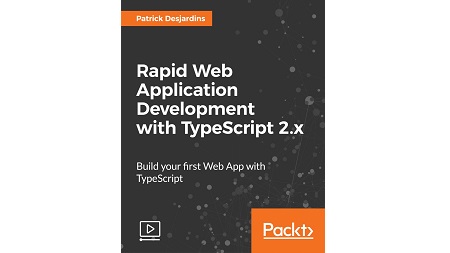
English | MP4 | AVC 1920×1080 | AAC 48KHz 2ch | 1h 44m | 383 MB
A fast-paced guide to building cool web applications with the TypeScript 2.x!
Writing large applications in JavaScript is a challenge. TypeScript brings JavaScript down to Earth by providing optional static typing and future JavaScript features today. It gives the developer instant feedback on the code they are writing in order to catch mistakes earlier in the development process.
In this video course, you will put in place all TypeScript code to have the basics of the application running by starting the project from scratch, creating the structures and files needed and stitching the code all together with modules. You will also learn how to use third-party code not written in TypeScript. Finally, this volume shows how to enhance your build process in particular with Node and Gulp, and then, how to debug the application.
What You Will Learn
- How to Setup your basic TypeScript project, as well as NPM and Gulp extensions
- Work with TypeScript files, modules and namespaces
- How to Migrate third-party JavaScript libraries into your TypeScript project
- How to Run and Debug your code over different interfaces for improved performance
- How to Extend your TypeScript project to add exciting functionality – even for basic applications
Table of Contents
Setup TypeScript, NPM, and Gulp
The Course Overview
Visual Studio Code
Node.js
Getting Packages from NPM
Writing Gulp Script to Build TypeScript
Configuring TypeScript Compiler
Files, Modules, and Namespaces
Introducing the Web Project
Working with TypeScript Modules and Namespace
Review Basic TypeScript Concepts
Getting the Third-Party JavaScript Library
TypeScript Definition File and Third-Party Library
Referencing a Third-Party JavaScript Library
Referencing a Third-Party JavaScript Library Everywhere
Running and Debugging
Setting Up the Server with Gulp
Debugging with Chrome
Debugging with Visual Studio Code
Resolve the captcha to access the links!